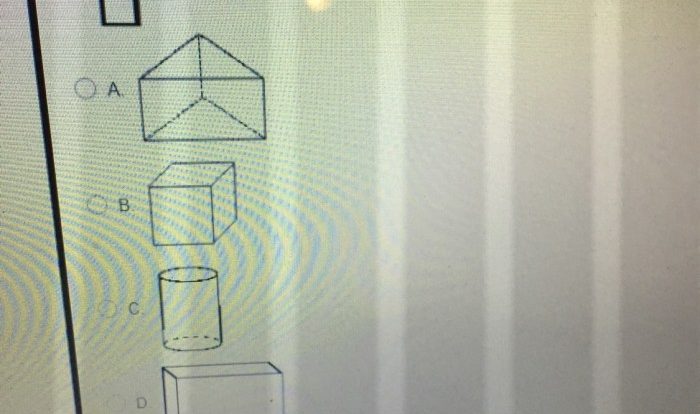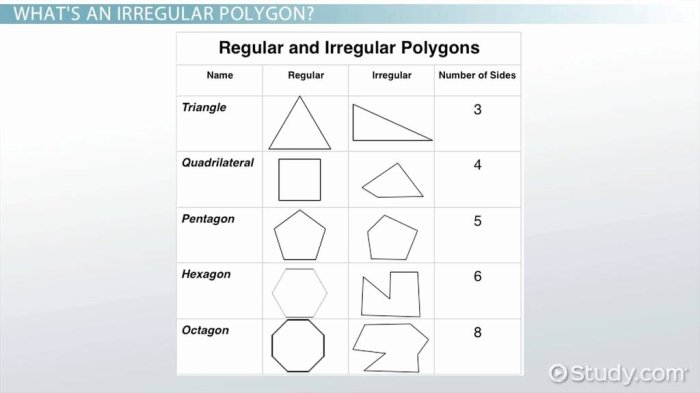Embark on a geometric journey with our comprehensive Geometry Chapter 2 Test Answer Key, a treasure trove of knowledge that will illuminate your understanding of geometric shapes, angles, and constructions.
Delve into the intricacies of triangles, squares, circles, and cubes, deciphering their unique properties and unlocking the secrets of area and perimeter calculations.
Geometry Chapter 2 Overview
Geometry Chapter 2 delves into the fundamental concepts of geometric shapes and angles. It establishes a solid foundation for understanding more complex geometric principles.
The chapter covers a wide range of topics, including:
- Points, lines, planes, and their relationships
- Classification of angles based on their measures
- Properties of triangles, quadrilaterals, and other polygons
- Angle relationships in parallel lines and transversals
Geometric Shapes
Geometry Chapter 2 introduces the basic building blocks of geometry: points, lines, and planes. Points are fundamental entities with no dimensions, while lines are one-dimensional objects that extend infinitely in both directions. Planes are two-dimensional surfaces that extend indefinitely in all directions.
The chapter then explores various geometric shapes formed by the combination of points, lines, and planes. These include:
- Polygons: Closed figures with straight sides, such as triangles, quadrilaterals, and pentagons
- Circles: Round figures with a fixed center and radius
- Spheres: Three-dimensional figures with a fixed center and radius
Angles
Angles play a crucial role in geometry, and Chapter 2 provides a comprehensive overview of different types of angles and their measurements.
Angles are formed by the intersection of two lines or rays. They are classified based on their measure in degrees:
- Acute angles: Angles less than 90 degrees
- Right angles: Angles exactly equal to 90 degrees
- Obtuse angles: Angles greater than 90 degrees but less than 180 degrees
- Straight angles: Angles exactly equal to 180 degrees
Geometric Shapes and Their Properties
Geometry is the study of shapes and their properties. In this chapter, we will learn about some of the basic geometric shapes, such as triangles, squares, circles, and cubes. We will also learn how to calculate the area and perimeter of these shapes.
Types of Geometric Shapes
There are many different types of geometric shapes, but some of the most common include:
- Triangles: Triangles have three sides and three angles. They can be classified as equilateral (all sides equal), isosceles (two sides equal), or scalene (no sides equal).
- Squares: Squares have four equal sides and four right angles. They are a special type of rectangle.
- Circles: Circles are closed curves that have all points equidistant from a central point. They are two-dimensional figures.
- Cubes: Cubes are three-dimensional figures that have six square faces. They are a special type of rectangular prism.
Properties of Geometric Shapes
Each geometric shape has its own unique set of properties. Some of the most common properties include:
- Sides: The sides of a shape are the line segments that connect its vertices.
- Angles: The angles of a shape are the points where two sides meet.
- Diagonals: The diagonals of a shape are the line segments that connect two non-adjacent vertices.
Formulas for Calculating Area and Perimeter
The area of a shape is the measure of its surface. The perimeter of a shape is the distance around its boundary.
There are many different formulas for calculating the area and perimeter of different shapes. Some of the most common formulas include:
- Area of a triangle: A = 1/2 – base – height
- Perimeter of a triangle: P = side1 + side2 + side3
- Area of a square: A = side^2
- Perimeter of a square: P = 4 – side
- Area of a circle: A = π – radius^2
- Circumference of a circle: C = 2 – π – radius
- Volume of a cube: V = side^3
- Surface area of a cube: A = 6 – side^2
Angles and Their Measurements: Geometry Chapter 2 Test Answer Key
In geometry, angles are formed by two rays or line segments that share a common endpoint, called the vertex. Angles are measured in degrees, minutes, and seconds using a protractor.
There are several different types of angles, classified based on their measure:
- Acute angle:An angle that measures less than 90 degrees.
- Obtuse angle:An angle that measures between 90 and 180 degrees.
- Right angle:An angle that measures exactly 90 degrees.
- Complementary angles:Two angles that add up to 90 degrees.
- Supplementary angles:Two angles that add up to 180 degrees.
- Vertical angles:Two angles that are formed when two lines intersect, and they are opposite to each other.
Angles are important in geometry because they are used to measure the size of shapes and to determine the relationships between lines and planes.
Measuring Angles with a Protractor
A protractor is a tool used to measure angles. It is a semicircular device with a scale marked in degrees. To measure an angle using a protractor, place the center of the protractor on the vertex of the angle and align the baseline of the protractor with one of the rays of the angle.
Read the measurement on the scale where the other ray of the angle intersects the protractor.
Relationships Between Angles, Geometry chapter 2 test answer key
There are several relationships between angles that are important to know:
- Supplementary angles:Two angles that add up to 180 degrees are called supplementary angles.
- Complementary angles:Two angles that add up to 90 degrees are called complementary angles.
- Vertical angles:Two angles that are formed when two lines intersect are called vertical angles. Vertical angles are always congruent, meaning they have the same measure.
Geometric Constructions
Geometric constructions are a set of techniques for drawing geometric shapes with precision using only a compass and a straightedge. These tools allow us to create accurate representations of geometric figures for various purposes, such as design, architecture, and mathematics.
The principles of geometric construction involve understanding the properties of shapes and using tools to create them precisely. The basic steps typically involve establishing reference points, drawing arcs, and connecting points to form the desired shape.
Constructing Triangles
- Equilateral Triangle:Draw a circle with the desired side length as the radius. Mark three points equally spaced around the circle and connect them to form the triangle.
- Isosceles Triangle:Draw a line segment and mark its midpoint. Use the midpoint as the center of a circle with radius equal to half the desired base length. Draw arcs intersecting the line segment at equal distances from the midpoint to form the base angles.
- Scalene Triangle:Draw three line segments of different lengths. Use one segment as the base and construct the other two sides by drawing arcs from the endpoints of the base with radii equal to the remaining segment lengths.
Constructing Squares
- Square:Draw a line segment and bisect it perpendicularly to find the midpoint. Draw arcs with the midpoint as the center and radius equal to half the desired side length. Connect the points where the arcs intersect the line segment and its perpendicular bisector.
Constructing Circles
- Circle:Mark a point as the center of the circle. Set the compass to the desired radius and draw a circle by rotating it around the center point.
Constructing Other Shapes
In addition to basic shapes, geometric constructions can also be used to create more complex figures, such as polygons, ellipses, and parabolas. These constructions involve combining the principles and techniques used for constructing triangles, squares, and circles.
Applications of Geometry in Real Life
Geometry is not just a subject taught in schools; it is a fundamental tool used in various fields to solve real-world problems and create beautiful designs.
In architecture, geometry is used to design buildings, bridges, and other structures. Architects use geometric principles to ensure that structures are stable, functional, and aesthetically pleasing. For example, the ancient Greeks used geometric ratios to design the Parthenon, one of the most famous and iconic buildings in the world.
Engineering
In engineering, geometry is used to design and build machines, bridges, and other structures. Engineers use geometric principles to calculate the strength and stability of structures, as well as to design efficient and effective systems. For example, engineers use geometry to design aircraft wings that are both strong and aerodynamic.
Design
In design, geometry is used to create beautiful and functional objects. Designers use geometric principles to create furniture, clothing, and other products that are both visually appealing and practical. For example, fashion designers use geometry to create clothing that is both stylish and comfortable.
Geometry is also used in everyday life in many ways. For example, we use geometry to measure distances, calculate areas, and create maps. Geometry is also used in art, music, and even sports.
FAQ Section
Where can I find additional practice problems for Geometry Chapter 2?
Check your textbook, online resources, or consult with your teacher for supplemental practice materials.
How do I improve my understanding of geometric constructions?
Practice regularly using a compass and straightedge, follow step-by-step instructions, and seek guidance from your teacher or online tutorials.
What are the key formulas I need to know for Geometry Chapter 2?
Memorize formulas for calculating the area and perimeter of triangles, squares, circles, and other shapes.

